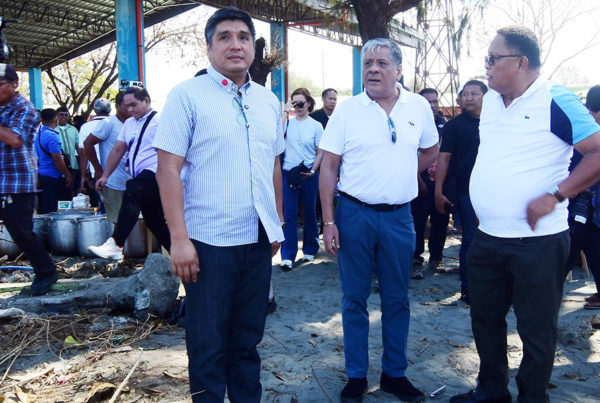Historian completes translation in Pangasinan
KATIPUNAN’S CORONEL QUINTOS’ WAR MEMOIRS
(Second Installment)
The translation of a century-old war memoir of a Katipunan colonel originally written in Pangasinan to Pillipino, depicting his exploits during the war against Spanish and American colonizers, is finally off the press.
(Almost) lost in translation
Orpilla has had his share of predicaments in translating the book.
He spent two years in translating the 82-page book.
He began translating the first volume of Revolucion Filipina, but was met with a particular challenge — translating Pangasinan to Filipino without losing its accuracy.
“Quintos wrote his works as if he were having a conversation”, said Orpilla.
Several phrases, only separated by commas, are what made translating Revolucion Filipina a challenge.
He says Quintos’s work should not be taken lightly, as it was far from that.
He called it Unwesternized, and not following orthodox grammar rules.
“That’s the beauty of Pangasinan [language]. Indigenous siya, may sariling literary identity”, he said.
“Ganon sa Pangasinan, iba yung salita natin lalo kapag traditional. Nahirapan akong paghiwa-hiwalayin yung mga phrases pero mananatili yung accuracy at context”, he added.
After translation, Orpilla sought the assistance of the NCCA for the publishing of his draft, to which they happily obliged. The publishing, however, was delayed due to the COVID-19 pandemic.
Challenging historical claims
Quintos’s memoirs gives a new take on Pangasinan’s liberation, and along with it are challenges on generally-accepted claims, which are perceived as gospel truth by others in the province today.
For example, in her book, “Pangasinan 1801-1900: The Beginnings of Modernization” by Dr. Rosario M. Cortes, it was cited that Dagupan City was liberated on July 22, 1898, led by Daniel Maramba, among other decorated heroes.
This, is a far cry from Quintos’s accounts, where he says the 1,500 Spanish forces surrendered on July 23, as large reinforcements led by Francisco Macabulos arrived on the very same day.
Quintos also never mentioned the name of Maramba leading the liberation as Quintos and Manalang themselves were in the frontlines, as the Expedicion Zambales.
“That’s the beauty of it”, said Orpilla, when asked if Revolucion Filipina may be a biased account of Quintos and Manalang’s exploits. “Yun nga ang maganda. There are existing contradictions? Then this will pave way for further researches, for further studies. Through that, makukuha natin kung ano yung tunay na nangyari sa kasaysayan”.
Cortes wrote scantily about the liberation of Western Pangasinan, but now, Quintos’s accounts may now shed the entirety of the revolution in the province to further light.
“This is another perspective from a local Katipunero. We should take his works with a grain of salt”, said Orpilla.
Hopes and expectations
With another account added as reference, Orpilla’s main objective is that Pangasinenses should know their local heroes.
“We all know about Bonifacio, about Aguinaldo. How come only a few people know about Roman Manalang? About Felipe Quintos? It was they who liberated some parts of the province, not those national figures taught to us”, said Orpilla.
He hopes younger generations may remember the efforts and sacrifices of the province’s freedom fighters, and give them the proper recognition they deserve.
Orpilla also hopes that his translation effort would pave way for further and deeper research into the local Katipunan movement in Pangasinan and Zambales, removing erroneous accounts along the way.
While waiting for another opportunity to translate Quintos’s sequel, Orpilla is currently in the works of translating a traditional Pangasinan medical guidebook.
He hopes to translate much of Pangasinan’s archives, in order for them not to be buried in oblivion. (Ahikam Pasion)








